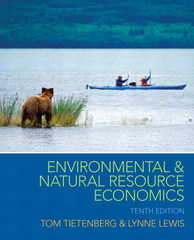Question
aKC= 2, aLC= 2, aKF= 3, aLF= 1L= 2,000; K= 3,000 b. Write down the unit cost of producing one yard of cloth and one
aKC= 2, aLC= 2, aKF= 3, aLF= 1L= 2,000; K= 3,000
b. Write down the unit cost of producing one yard of cloth and one calorie of food as a function of the price of onemachine-hour, r, and onework-hour, w. In a competitivemarket, those costs will be equal to the prices ofcloth, PC, andfood, PF. Solve for the factor prices r and w.
The unit cost of producing one yard of cloth and one calorie of food as a function of the price of onemachine-hour, r, is r=
The unit cost of producing one yard of cloth and one calorie of food as a function of the price of onework-hour, w, is w=
c. What happens to those factor prices when the price of cloth falls?
Adecrease in the price of cloth will cause the rental rate of capital to
A. rise and the wage rate of laborers to fall, leading to less production of cloth and adecrease in demand for the factor it uses intensivelylabor.
B. fall and the wage rate of laborers to rise, leading to greater production of cloth and anincrease in demand for the factor it uses intensivelycapital.
C. rise and the wage rate of laborers to fall, leading to greater production of cloth and anincrease in demand for the factor it uses intensivelylabor.
D. fall and the wage rate of laborers to rise, leading to less production of cloth and adecrease in demand for the factor it uses intensivelycapital.
d. Now assume that theeconomy's supply ofmachine-hours increases from3,000 to 4,000.
All of the following statements regarding this increase in the capital supply are true except
A. the labor constraint will remain unchanged.
B. the new production possibilities frontier will have a larger horizontal intercept(if cloth is on the horizontalaxis).
C. the minimum price of cloth will remain unchanged.
D. the new capital constraint will have a larger vertical intercept(if cloth is on the horizontalaxis).
e. How much cloth and food will the economy produce after this increase in its capitalsupply?
If we assume that the economy is producing at a point such that all resources are beingutilized, then the economy will produce ______ units of cloth and
______ units of food. (Enter your responses rounded to the nearest wholenumber.)
f. Describe how the allocation ofmachine-hours andwork-hours between the cloth and food sectors changes. Do those changes conform with the changes described for the case with factorsubstitution?
After the increase,
A. cloth production fell to 1,000 while food production increased to 500. This is the opposite of what the Rybczynski Effect predicts will happen.
B. cloth production increased to 1,000 while food production fell to 500. This is precisely what the Rybczynski Effect predicts will happen.
C. cloth production increased to 500 while food production fell to 1,000. This is precisely what the Rybczynski Effect predicts will happen.
D. cloth production fell to 500 while food production increased to 1,000. This is precisely what the Rybczynski Effect predicts will happen.
Step by Step Solution
There are 3 Steps involved in it
Step: 1

Get Instant Access to Expert-Tailored Solutions
See step-by-step solutions with expert insights and AI powered tools for academic success
Step: 2

Step: 3

Ace Your Homework with AI
Get the answers you need in no time with our AI-driven, step-by-step assistance
Get Started


